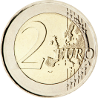 |
C o m m e m o r a t i v e C o i n s |
||
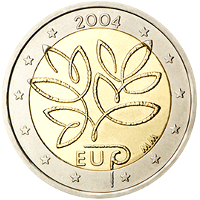 🔎
🔎 |
 |
Finland | 24 Jun. 2004 | Fifth Enlargement of the European Union in 2004 |
20001 20002 20005 |
1,000,000 |  |
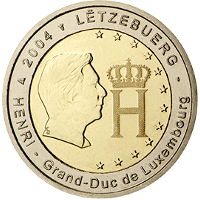 🔎
🔎 |
 |
Luxembourg | 26 Jul. 2004 | Effigy and Monogram of Grand Duke Henri 1st coin of the Grand-Ducal Dynasty series |
20001 20002 20005 |
2,481,800 |  |
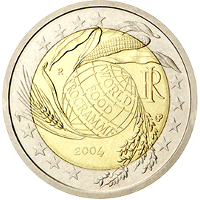 🔎
🔎 |
 |
Italy | 13 Dec. 2004 | Fifth Decade of the World Food Programme |
20001 20002 20005 |
16,000,000 |  |
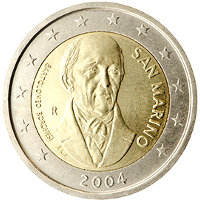 🔎
🔎 |
 |
San Marino | 16 Dec. 2004 | Bartolomeo Borghesi |
20001 20002 20005 |
110,000 |  |
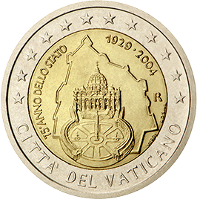 🔎
🔎 |
 |
Vatican City | 16 Dec. 2004 | 75th anniversary of the Foundation of the Vatican City State |
20001 20002 20005 |
85,000 |  |
| ⇓ 2005 ⇓ |
| References : | |||
| 20001 | Images taken with authorisation by the ECB ‐ Mail dated 20.Feb.2020 © "European Central Bank" |
20002 | Data mirrored from Wikipedia Page "2_euro_commemorative_coins" with friendly support of the guardians of that page. |
| 20003 | Not Applicable | 20004 | Coloured version of this Commemorative Coin in circulation EU‐legal‐technical specifications do not recongnise colour prints, but the EU is tolerate them, due to the facts that their numbers are very small and that they are sold in special packs and therefor are very unlikely to be used as currency. |
| 20005 | enlarged Images taken with authorisation by Gerd Seyffert © "Gerd Seyffert 2021" |
20006 | Not Applicable |
 |



